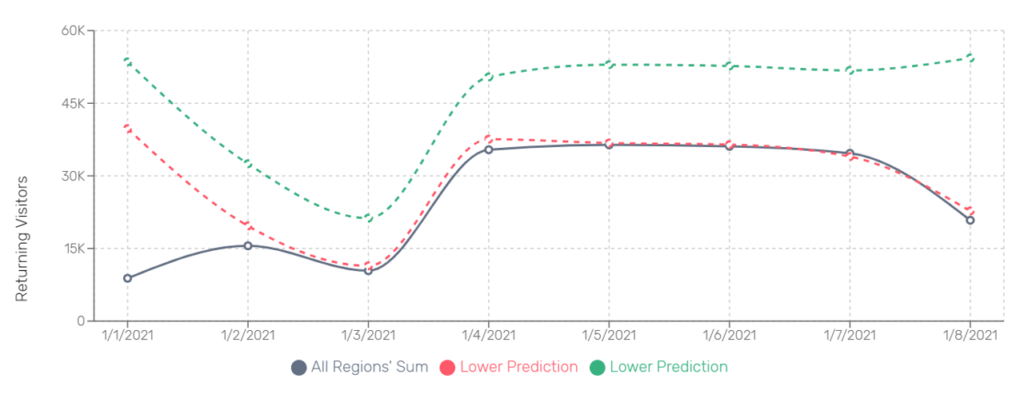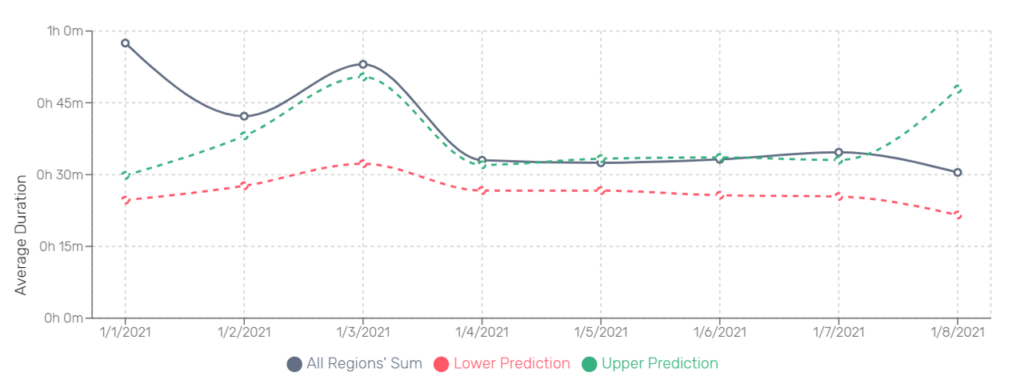This article is published in the Case Study category.
From the evening of January 6th, due to the snow falling all over the country, not only office workers who commute by car, but also citizens who used public transportation, complained of inconvenience. In addition, on the 7th, the day after a heavy snowfall, the so-called arctic cold wave, which reached the lowest temperature of -14.5℃ and the highest temperature of -8.4℃, occurred in Seoul. With the number of daily COVID cases reaching 1,000 per day, both the last Christmas and New Year’s Day showed significantly less than the prediction. Accordingly, we would like to see how heavy snowfall and Arctic cold waves across the country had an effect on Gangnam Station.
The graphs below show the number of visitors and returning visitors to Gangnam Station and the average staying time through LBASesne, a real-time population analytics system of DFRC.



Do you want to know more about our smart city valuation? Contact us to know more.
A number of media have predicted that a large number of citizens would have used public transportation in such weather. However, looking at the demographic results of Gangnam Station shown in LBASense, the number of visitors to Gangnam Station on January 7th and the number of returning visitors showed little change, and the average duration time was only slightly increased compared to the 6th day. This fact proves that the general expectation that more people took public transportation than cars and that this would increase the waiting time until boarding did not apply to the actual data.
If you come up with any questions about us or our solution, please contact us via email or our web page

Data team
Copyright © 2022 DFRC
43 Science Park Road #01-11 Rm 8, Singapore 117408